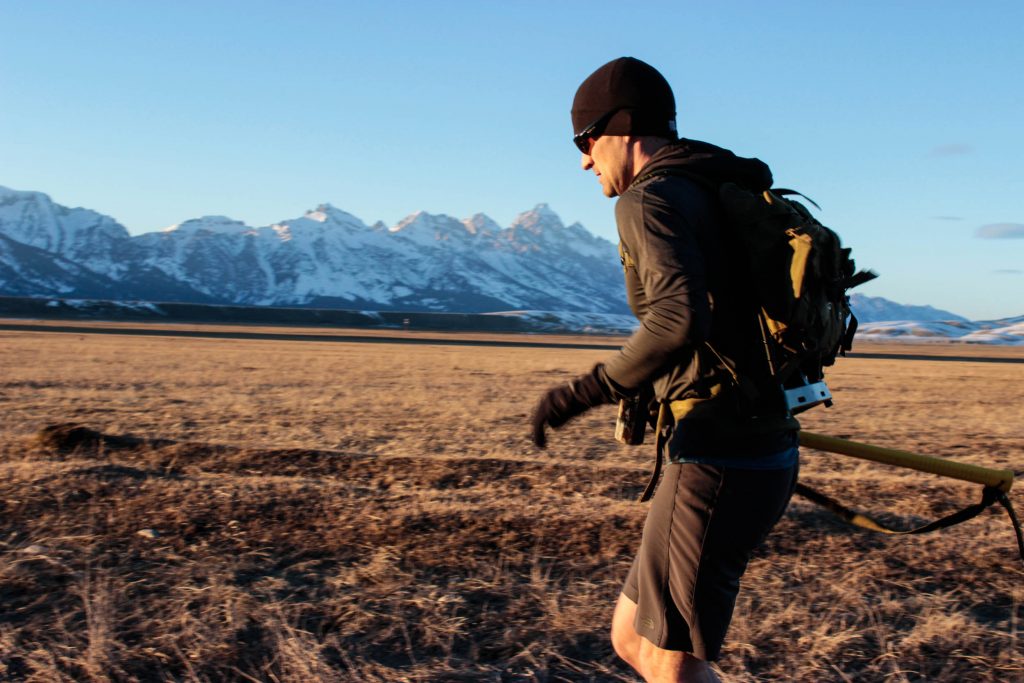
By Dr. Kristen Ouellette and Rob Shaul
The goal of our Ruck Deep Dive waa to develop the most effective, efficient, and least impactful methodology to train for rucking performance.
Key to developing this methodology is identifying what fitness and other attributes have the most impact on rucking performance. Going into this pilot study, we identified five attributes to asses.
- Body Mass
- Height
- Relative Strength
- Max Pull Ups
- Aerobic Fitness
Pilot Study Design
Over 2 days we tested six of our local Military Athlete lab rats.
Day 1 we measured body weight and height, 1RM Front Squat and 1RM Bench Press, max pull ups and a 1.5 mile run for time.
Day 2 was a 10km (6.2 miles) Ruck Run for Time at 29kg. We chose 29kg (64 pounds) for load. This load was chosen because it was identified in a 2009 NATO study as the average fighting load for operations in Afghanistan.
Following the ruck, we conducted a statistical analysis to look for a strong correlation between the four attributes and the rucking performance.
Quick Take-Aways
- Upper body relative strength was highly related to ruck performance
- 1.5 mile run time was highly related to ruck performance
- Relative strength of the lower body was moderately related to ruck performance
- Height and weight were not related to ruck performance
- Athletes who possess high levels of relative strength and aerobic capacity, regardless of their total body size, are capable of high-level ruck performance on mid-distance efforts
Discussion
We tested 6 men of varying ruck experience. Their results are organized below with the strongest ruck performer on top and then in descending order.

The strongest ruck performance was associated with high levels of relative strength and a fast 1.5 mile run time (an indicator of high aerobic fitness). Comparatively the slowest ruck time was associated with low levels of relative strength and the 2nd slowest 1.5 mile run time.
While we have to be careful about viewing these associations as causative (we can’t say with certainty that higher relative strength and VO2 caused better ruck performance), we feel that these results are both promising and surprising.
In isolation, the test that was most highly related to ruck performance was relative strength on the bench press, followed by maximal pull ups (a measure of relative strength of the pulling muscles), then 1.5 mile run and finally, relative front squat strength. Our best explanation for this finding is that in order to ruck fast and efficiently athletes must be able to transfer force through the midsection and upper body the entire time to keep the load stable.
Next Steps
Obviously, we need more study subjects.
Beyond this obvious need, we feel the study parameters and assessments are solid.
With a larger study group, we hope to answer the following questions:
- When we test a more diverse group (different levels and combinations of relative strength and aerobic endurance) does a discernable pattern emerge?
- Will upper body strength still correlate to rucking performance?
- Other studies have found a strong correlation between body weight and height to rucking performance. In our group height and weight were not associated with superior rucking. However, with a larger group, will this may re-emerge as a factor.
Ruck Deep Dive – Study #2: Best Ways To Improve Rucking
STAY UPDATED
Sign-up for our BETA newsletter. Training tips, research updates, videos and articles - and we’ll never sell your info.
